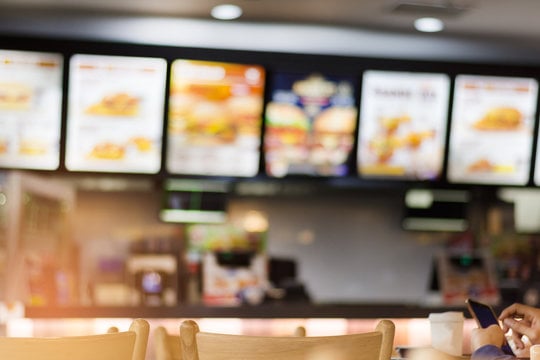
Retailers today are caught between customer expectations and operational costs. In 2024, total U.S. retail sales surpassed $7.2 trillion, but operating margins stayed below 2.5%. Facility-related expenses—energy, maintenance, and capital repairs—rose 13.7% in 2023 and another 5.2% in 2024, now consuming nearly 20% of total store operating budgets.
Every malfunctioning HVAC unit, dim light fixture, or broken checkout terminal now has a measurable cost. Based on Vixxo’s internal data, one hour of downtime on a key revenue-generating asset results in $1,100–$1,400 in lost sales. When these incidents scale across portfolios of hundreds of stores, the financial impact becomes a direct margin threat.
The Hidden Drain of Reactive Maintenance
Many retail chains still operate under a “run-to-fail” model, reacting to breakdowns instead of preventing them. The result is a higher total cost of ownership. Studies show unplanned maintenance costs 3–9 times more than preventive maintenance.
Vixxo’s performance analytics reveal the difference clearly:
|
Metric |
Reactive Portfolio |
Preventive Program |
Improvement |
|
Avg. Work Order Cost |
$610 |
$465 |
24% lower |
|
Energy Spend per Site |
$185K |
$152K |
18% lower |
|
Repeat Work Orders |
19% |
11% |
42% fewer |
|
Days to Complete |
12.7 |
8.3 |
35% faster |
These numbers reinforce that preventive maintenance doesn’t just cut costs—it protects revenue, uptime, and brand reputation.
The Vendor Overload Problem
Retailers often manage hundreds of service providers across regions, each with different rates, SLAs, and communication protocols. This fragmentation causes inconsistent results, delayed response times, and missed opportunities for savings.
Vixxo’s network model simplifies vendor management by combining 200,000+ vetted technicians across 100+ trades with centralized oversight and data tracking. Each provider is measured against standardized KPIs like:
- IVR compliance (check-in/out verification)
- Tech-to-site response time
- First-time fix rate
- Average time on-site
This data-driven approach ensures service consistency while reducing administrative burden by as much as 30%.
Technology Is the Game-Changer
Most CMMS platforms fail to deliver full value because of complexity, poor adoption, or lack of actionable insights. In fact, 80% of CMMS users never use all available features.
VixxoLink™, the company’s proprietary platform, solves this by connecting every layer of the facilities ecosystem—from service requests to invoice validation—in one transparent view.
Key capabilities include:
- Automated invoice validation to prevent overcharges for labor and materials.
- Duplicate ticket detection to eliminate redundancy.
- Real-time technician tracking for accurate ETAs.
- SmartGuide® workflows to guide store managers through accurate issue logging.
- ChatFPT™, an AI-powered field assistant that helps technicians troubleshoot equipment instantly.
The result is measurable savings. Across major retail portfolios, VixxoLink has delivered:
- 11% average cost reduction per work order
- 32% fewer repeat repairs
- $2.6 million in verified invoice savings in the past 12 months
Chart: Impact of VixxoLink Implementation
|
Performance Metric |
Before |
After |
% Improvement |
|
Avg. Invoice Cost |
$540 |
$480 |
11% lower |
|
Repeat Work Orders |
18.9% |
13% |
31% fewer |
|
SLA Compliance |
78% |
92% |
+14 points |
Turning Data Into Action
The VixxoLink reports dashboard gives retailers visibility into site-level and portfolio-wide trends. Facilities teams can identify where spend per square foot is rising, which assets are underperforming, and where preventive programs can yield the fastest ROI.
In one national apparel chain, analytics revealed that 12% of HVAC units accounted for nearly half of repair spend. By targeting replacements on those units, the company saved $1.2 million in the first year and cut downtime by 40%.
Data transparency not only enables better decisions but also helps retailers align facilities performance with broader corporate goals like sustainability and brand consistency.
The Brand Experience Depends on the Facilities Experience
In retail, customer perception is often shaped before a single purchase. Research shows 82% of shoppers say store appearance influences buying decisions, and 34% directly associate signage quality with product quality.
That means lighting, cleanliness, HVAC comfort, and digital display uptime are not just operational concerns—they are sales drivers. A clean, well-lit, and comfortable store reinforces brand trust, while recurring maintenance issues signal neglect.
The Future Is Predictive, Not Reactive
Retail facilities management is shifting toward predictive models driven by AI, analytics, and verified cost controls. By integrating platforms like VixxoLink and ChatFPT into day-to-day workflows, retailers can predict failures before they happen, prevent overcharges automatically, and prioritize high-value work orders.
Retailers using predictive models report:
- 15–20% reduction in total facilities spend within 18 months
- 10–12% faster response times
- 25% increase in asset uptime
These results prove that facilities excellence is no longer a back-office function—it is a front-line profit strategy.
Let’s talk.
Get in touch and fill out the contact form below!




